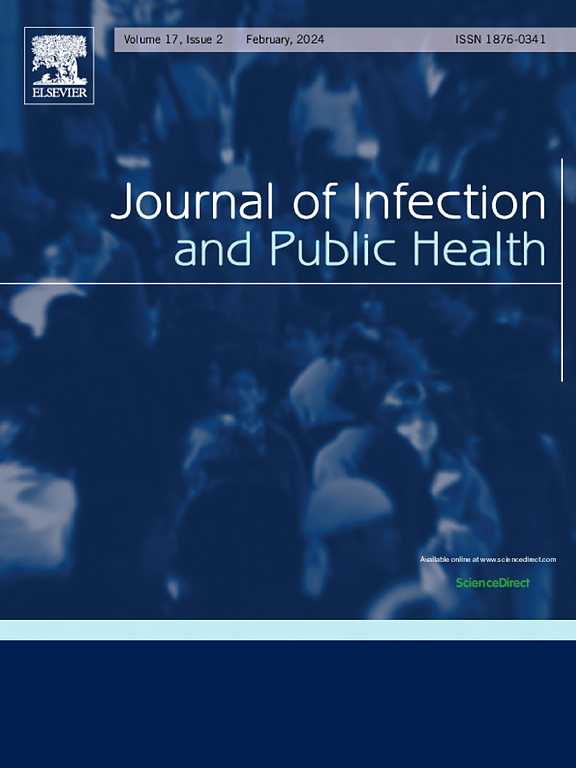careHPV检测检测宫颈癌前病变的风险评估:中国一个筛查项目的5年随访
IF 4.7
3区 医学
Q1 INFECTIOUS DISEASES
引用次数: 0
摘要
背景:CareHPV是一种非常有前途的HPV筛查方法,作为一种简化和快速的护理点检测,使其特别适合资源匮乏地区。在横断面研究设计中,它对宫颈癌前病变的检测具有很高的灵敏度。然而,在实际环境中,关于careHPV检测的长期保护的证据仍然有限。方法:自2016年起在中国鄂尔多斯市实施政府主导的宫颈癌筛查项目,目标人群为35-64岁的女性居民。收集CareHPV标本,并在基线筛查中使用醋酸和Lugol碘目视检查(VIA/VILI)。基线时hpv阳性或VIA/ vili疑似癌症的妇女被邀请进行为期一年的随访筛查。与此同时,那些hpv阴性的人计划进行5年的重新筛查。诊断为宫颈上皮内瘤变2级或更严重(CIN2+)的妇女将根据临床指南进行临床治疗。目前的研究包括具有有效基线筛查结果的参与者,并参加了2017年1月至2021年12月期间进行的有效careHPV结果的随访,旨在评估careHPV的长期风险分层。采用生存分析计算CIN2+的累积发病率(CIRs)和危险比(hr)。结果:在2016年至2020年期间参加基线筛查的179306名妇女中,12.60%的人检测出careHPV阳性,其中657例为CIN2+。最终的分析包括我们研究中的18,562名女性,其中58.54%在基线时为carehpv阳性。最终分析包括17,905名在2016年至2020年期间接受筛查并在2017年至2021年期间参加了有效HPV结果的随访的女性,以及657名在基线时被确定为CIN2+的女性。基线careHPV检测为阴性和阳性的妇女的5年CIRs分别为0.003和0.101。随访期间,从careHPV阴性到阳性(831例,4.64%)、从careHPV阳性到阴性(6688例,37.35%)和保持稳定的careHPV阳性状态(3535例,19.74%)的妇女,发生CIN2+的5年CIRs分别为0.009、0.009和0.11。结论:我们的研究结果支持在筛查项目的5年随访中进行careHPV检测的长期安全性和保护作用。对于卫生保健资源有限的地区来说,CareHPV是一个可行的选择。本文章由计算机程序翻译,如有差异,请以英文原文为准。
Risk assessment of careHPV testing for the detection of cervical precancerous lesions: 5-year follow-up of a screening program in China
Background
CareHPV is a highly promising screening HPV assay that functions as a simplified and rapid point-of-care test, making it particularly well-suited for low-resource areas. It exhibits high sensitivity for detecting cervical precancerous lesions in cross-sectional study design. However, there is still limited evidence on the long-term protection of careHPV testing in the practical setting.
Methods
A government-led cervical cancer screening program was implemented in Ordos City, China, specifically targeting female residents aged 35–64 years since 2016. CareHPV specimens were collected and visual inspection with acetic acid and Lugol iodine (VIA/VILI) was performed in the baseline screening. Women who were HPV-positive or VIA/VILI-suspected cancer at baseline were invited for a one-year follow-up screening. At the same time, those who were HPV-negative were scheduled for a 5-year rescreening. Women diagnosed with cervical intra-epithelial neoplasia grade 2 or worse (CIN2+) would be referred to clinical treatment as per the clinical guidelines. The current study includes participants who had valid baseline screening results and attended follow-ups with valid careHPV results conducted between January 2017 and December 2021, aiming to assess the long-term risk stratification for careHPV. Cumulative incidence rate (CIRs) and hazard ratio (HRs) for CIN2+ were calculated, using survival analysis.
Results
Among the 179,306 women enrolled in the baseline screening between 2016 and 2020, 12.60 % tested positive for careHPV, with 657 cases of CIN2+ identified. The final analysis included 18,562 women in our study, of whom 58.54 % were careHPV-positive at baseline. The final analysis consisted of 17,905 women who underwent screening between 2016 and 2020 and attended follow-ups from 2017 to 2021, with valid HPV results, and 657 women who identified as CIN2+ at the baseline. The 5-year CIRs were 0.003 and 0.101 among women who tested negative and positive for baseline careHPV, respectively. The 5-year CIRs for developing CIN2+ during follow-ups were 0.009, 0.009, and 0.11 for the groups of women who transitioned from careHPV-negative to positive (831, 4.64 %), careHPV-positive to negative (6688, 37.35 %), and maintained a stable positive careHPV status (3535, 19.74 %), respectively.
Conclusions
Our findings support the long-term safety and protection of careHPV testing in 5-year follow-ups of screening programs. CareHPV represents a viable option for regions with limited healthcare resources.
求助全文
通过发布文献求助,成功后即可免费获取论文全文。
去求助
来源期刊

Journal of Infection and Public Health
PUBLIC, ENVIRONMENTAL & OCCUPATIONAL HEALTH -INFECTIOUS DISEASES
CiteScore
13.10
自引率
1.50%
发文量
203
审稿时长
96 days
期刊介绍:
The Journal of Infection and Public Health, first official journal of the Saudi Arabian Ministry of National Guard Health Affairs, King Saud Bin Abdulaziz University for Health Sciences and the Saudi Association for Public Health, aims to be the foremost scientific, peer-reviewed journal encompassing infection prevention and control, microbiology, infectious diseases, public health and the application of healthcare epidemiology to the evaluation of health outcomes. The point of view of the journal is that infection and public health are closely intertwined and that advances in one area will have positive consequences on the other.
The journal will be useful to all health professionals who are partners in the management of patients with communicable diseases, keeping them up to date. The journal is proud to have an international and diverse editorial board that will assist and facilitate the publication of articles that reflect a global view on infection control and public health, as well as emphasizing our focus on supporting the needs of public health practitioners.
It is our aim to improve healthcare by reducing risk of infection and related adverse outcomes by critical review, selection, and dissemination of new and relevant information in the field of infection control, public health and infectious diseases in all healthcare settings and the community.
 求助内容:
求助内容: 应助结果提醒方式:
应助结果提醒方式:


